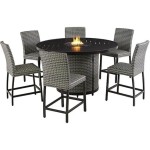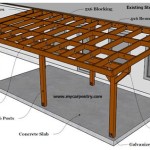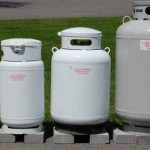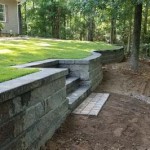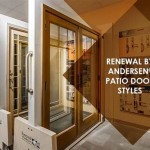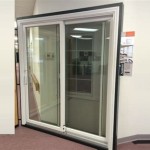Glass Door Patio Enclosures: Extending Living Space and Enhancing Comfort
Glass door patio enclosures represent a significant home improvement project that can transform an underutilized outdoor space into a versatile and comfortable extension of the home. These enclosures, also referred to as sunrooms or screened-in patios with glass doors, offer a myriad of benefits, ranging from increased living space and enhanced aesthetic appeal to improved energy efficiency and protection from the elements. Understanding the various aspects of glass door patio enclosures, including their types, materials, installation process, cost factors, and maintenance requirements, is crucial for homeowners considering this worthwhile investment.
The primary function of a glass door patio enclosure is to create a seamless transition between the interior of the home and the outdoor environment. By enclosing a patio or deck with glass doors and windows, homeowners can enjoy the beauty and tranquility of the outdoors without being subjected to adverse weather conditions, insects, or excessive sunlight. This effectively expands the usable living area of the home, providing a space for relaxation, entertainment, dining, or even a home office. The influx of natural light afforded by the glass enclosure contributes to a brighter and more inviting indoor atmosphere.
Furthermore, glass door patio enclosures can significantly enhance the overall value of a property. Potential homebuyers often view these additions as a desirable feature, appreciating the added living space and the potential for year-round enjoyment. The aesthetic appeal of a well-designed and constructed enclosure can also enhance the curb appeal of the home, making it more attractive to prospective buyers.
Types of Glass Door Patio Enclosures
Glass door patio enclosures are available in a variety of styles and configurations, each designed to meet specific needs and preferences. Some of the most common types include:
Three-Season Rooms: These enclosures are typically designed for use during the spring, summer, and fall months. They often feature single-pane glass or screened windows that can be easily opened to allow for ventilation. Three-season rooms are not typically heated or cooled, making them a more economical option than four-season rooms.
Four-Season Rooms: These enclosures are designed for year-round use and are typically insulated and equipped with heating and cooling systems. They often feature double-pane or triple-pane glass, as well as insulated walls and roofs, to ensure optimal energy efficiency and comfort. Four-season rooms are essentially an extension of the home's living space and can be used for a variety of purposes, such as a living room, dining room, or home office.
Screened-In Porches with Glass Insets: These enclosures combine the benefits of a screened-in porch with the added protection of glass panels. The screens allow for ventilation and insect protection, while the glass panels can be closed during inclement weather to provide additional shelter. This type of enclosure is often a cost-effective option for homeowners who want to enjoy the outdoors without being completely enclosed.
Solariums: Solariums are characterized by their predominantly glass construction, often featuring glass walls and roofs. This provides maximum exposure to sunlight and creates a bright and airy atmosphere. Solariums are often used as sunrooms or greenhouses, providing a space for growing plants and enjoying the warmth and light of the sun.
Retractable Enclosures: These enclosures feature retractable glass panels that can be opened or closed to create an open-air or enclosed space. This provides maximum flexibility and allows homeowners to adapt the enclosure to changing weather conditions and personal preferences.
The selection of the appropriate type of glass door patio enclosure will depend on factors such as budget, climate, desired level of comfort, and intended use of the space.
Materials Used in Glass Door Patio Enclosures
The materials used in the construction of a glass door patio enclosure play a crucial role in its durability, energy efficiency, and aesthetic appeal. Common materials include:
Framing Materials: The framing of the enclosure provides structural support and defines its overall shape. Common framing materials include:
Aluminum: Aluminum frames are lightweight, durable, and resistant to corrosion. They are also relatively low-maintenance and can be painted or powder-coated to match the home's exterior. Aluminum frames are a popular choice for modern and contemporary designs.
Vinyl: Vinyl frames are also low-maintenance and resistant to moisture and rot. They are typically less expensive than aluminum frames and offer good insulation properties. Vinyl frames are available in a variety of colors and styles.
Wood: Wood frames provide a classic and elegant look. They offer excellent insulation properties but require regular maintenance to prevent rot and insect damage. Wood frames are often used in traditional and rustic designs.
Composite: Composite frames are made from a blend of wood fibers and plastic, offering the benefits of both materials. They are durable, low-maintenance, and resistant to moisture and rot. Composite frames are a good option for homeowners who want the look of wood without the maintenance requirements.
Glass Types: The type of glass used in the enclosure significantly impacts its energy efficiency, safety, and sound insulation. Common glass types include:
Single-Pane Glass: Single-pane glass is the least expensive option but offers the lowest level of insulation. It is typically used in three-season rooms or screened-in porches with glass insets.
Double-Pane Glass: Double-pane glass consists of two panes of glass separated by a layer of air or gas. This provides better insulation than single-pane glass and helps to reduce energy costs. Double-pane glass is a popular choice for four-season rooms.
Triple-Pane Glass: Triple-pane glass consists of three panes of glass separated by layers of air or gas. This provides the highest level of insulation and is ideal for homes in cold climates. Triple-pane glass is more expensive than double-pane glass but can offer significant energy savings over time.
Low-E Glass: Low-E glass is coated with a thin layer of metallic oxide that reflects heat and ultraviolet light. This helps to reduce heat gain in the summer and heat loss in the winter, improving energy efficiency and reducing fading of interior furnishings.
Tempered Glass: Tempered glass is heat-treated to make it stronger and more resistant to breakage. If it does break, it shatters into small, blunt pieces instead of sharp shards, reducing the risk of injury. Tempered glass is often used in doors and windows that are close to the floor or in areas where there is a high risk of impact.
Laminated Glass: Laminated glass consists of two panes of glass bonded together with a layer of plastic. This provides excellent security and sound insulation. Laminated glass is often used in areas where security is a concern, such as entry doors or windows.
The choice of materials will depend on factors such as budget, climate, aesthetic preferences, and desired level of performance.
Installation and Cost Considerations
The installation of a glass door patio enclosure is a complex process that typically requires professional expertise. The installation process typically involves the following steps:
Permitting and Planning: Before beginning construction, it is essential to obtain the necessary permits from the local building department. A detailed plan of the enclosure, including dimensions, materials, and construction methods, should be submitted to the building department for approval.
Site Preparation: The site where the enclosure will be built must be properly prepared. This may involve clearing the area of debris, grading the ground, and pouring a concrete foundation. The foundation must be level and stable to support the weight of the enclosure.
Framing and Glazing: The framing of the enclosure is then constructed, followed by the installation of the glass doors and windows. The doors and windows must be properly sealed to prevent air and water leaks.
Electrical and HVAC: If the enclosure will be used as a four-season room, electrical wiring and HVAC systems must be installed. This may involve running new electrical circuits and installing a heating and cooling unit.
Finishing Touches: Once the construction is complete, the finishing touches are added, such as painting, trim work, and flooring.
The cost of a glass door patio enclosure can vary widely depending on factors such as the size of the enclosure, the type of materials used, the complexity of the design, and the location of the project. Generally, the cost can range from several thousand dollars to tens of thousands of dollars. It is important to obtain quotes from several contractors before making a decision.
Factors that contribute to the overall cost include:
Size and Complexity: Larger and more complex enclosures will typically cost more to build than smaller and simpler enclosures.
Materials: The type of materials used in the construction of the enclosure will significantly impact the cost. High-end materials, such as triple-pane glass and custom wood framing, will cost more than standard materials.
Labor Costs: Labor costs can vary depending on the location of the project and the availability of skilled labor.
Permitting Fees: Permitting fees can vary depending on the local building department.
Site Preparation: The amount of site preparation required will impact the cost of the project.
Additional Features: Additional features, such as electrical wiring, HVAC systems, and custom finishes, will add to the overall cost.
Homeowners should factor in the long-term benefits of the enclosure, such as increased property value and reduced energy costs, when considering the cost of the project.
Proper maintenance is crucial for extending the lifespan and preserving the beauty of a glass door patio enclosure. Regular cleaning of the glass doors and windows is essential for maintaining optimal visibility. The framing should be inspected periodically for signs of damage, such as cracks, rot, or insect infestation. Any necessary repairs should be made promptly to prevent further damage.

4 Types Of Home Patio Enclosures Enclosure

Aflresco Patio Enclosure Frameless Glass Outdoor Weatherproof

Verandah Enclosures Melbourne Alfresco Garages Patio

Aflresco Patio Enclosure Frameless Glass Outdoor Weatherproof

Verandah Enclosures Melbourne Alfresco Garages Patio

4 Types Of Home Patio Enclosures Enclosure

Patio Enclosures Crimsafe Security Systems

4 Door Options For Sunroom Additions Zephyr Thomas

Glass Patio Enclosures Apollo Patios

23 Enclosed Patio Ideas For Your House 2024 A Nest With Yard Design Door
Related Posts

